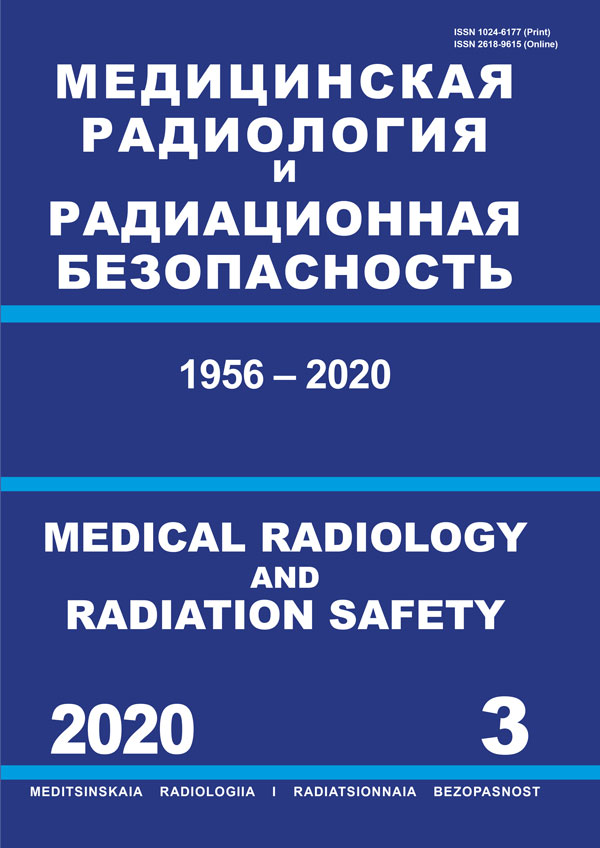A.I. Burnasyan Federal Medical Biophysical Center (FMBC) FMBA (Leading Researcher)
Russian Federation
Russian Federation
Russian Federation
Russian Federation
Russian Federation
CSCSTI 76.03
CSCSTI 76.33
Russian Classification of Professions by Education 14.04.02
Russian Classification of Professions by Education 31.06.2001
Russian Classification of Professions by Education 31.08.08
Russian Classification of Professions by Education 32.08.12
Russian Library and Bibliographic Classification 51
Russian Library and Bibliographic Classification 534
Russian Trade and Bibliographic Classification 5708
Russian Trade and Bibliographic Classification 5712
Russian Trade and Bibliographic Classification 5734
Russian Trade and Bibliographic Classification 6212
The most important stage of radiation therapy of oncological diseases is the planning of radiation treatment. In this work, this complex process in relation to proton therapy is proposed to be divided into medical and physical planning. In conventional therapy with photons and electrons, the latter is usually called dosimetric planning, however, when applied to proton radiation therapy, this stage involves a significantly wider range of tasks related to the modification and scanning of the proton beam, spreading and compensation of ranges, taking into account when planning for uncertainties and finiteness of proton ranges, a decrease in the contribution to the dose of secondary neutrons, the creation of error-tolerant optimization algorithms for dosimetric plans, and, finally, a precision calculation of dose distributions. The paper discusses the main stages and problems of physical planning of proton radiation therapy. Particular attention is paid to the formation of an extended high-dose region (extended Bragg peak) using the beam scattering method and scanning method, and to the algorithms for calculating the dose distributions created by protons in the scattering and beam scanning systems. The most detailed consideration is given to different versions of the proton pencil beam method, which allows to increase the dose calculation accuracy and take into account the transverse scattering and fluctuations in proton energy losses, especially at the end of the path (halo effect), analytical and numerical methods. Scanning are divided into three main technologies: homogeneous scanning, single field uniform dose (SFUD), multi-field uniform dose (MFUD), often called intensity modulated proton therapy (IMPT). Actual accounting problems are considered when planning the irradiation of the movement of organs, and uncertainties in determining path lengths and optimization of irradiation plans. In particular features, problems and modern approaches to the optimization of dosimetry plans of proton radiation therapy are discussed. It is noted that one of the most promising practical solutions for the uncertainty management in determining the path lengths of protons in optimization is to include possible errors in the objective function of the optimization algorithm. This technique ensures that an optimized irradiation plan will more reliably protect normal tissues and critical organs adjacent to the irradiation target from overexposure.
radiotherapy, protons, proton scattering, range modulation, pencil beam, dose, organ movement, range uncertainty, planning optimization
1. Gottschalk B. Lectures (BGtalks.zip) and a draft textbook (PBS.pdf in BGdocs.zip) available for free download at http://physics.harvard.edu/~gottschalk or the Particle Therapy Co-Operative Group (PTCOG) website: http://ptcog.web.psi.ch/
2. Gottschalk B. Physics of Proton Interactions in Matte. In: Proton Therapy Physics. Ed. H. Paganetti. Taylor & Francis Group. 2012. P. 20-59.
3. Lu H-M, Flanz J. Characteristics of Clinical Proton Beams. In: Proton Therapy Physics. Ed. H. Paganetti. Taylor & Francis Group. 2012. P. 103-24.
4. Engelsman M. Physics of Treatment Planning for Single-Field Uniform dose. In: Proton Therapy Physics. Ed. H. Paganetti. Taylor & Francis Group. 2012. P. 305-35.
5. Bortfeld T. An analytical approximation of the Bragg curve for therapeutic proton beams. Med Phys. 1997;24(12):2024-33.
6. Abramowitz M, Stegun IA. Eds. Handbook of Mathematical Functions. Dover, New York. 1972.
7. Boon SN. Dosimetry and quality control of scanning beams. Thesis. 1998. Groningen.
8. Koehler AM, Schneider RJ, Sisterson J. Range modulator for proton and heavy ions. Nucl Instrum Methods. 1975;131:437-40.
9. Smith AR. Proton therapy. Med Phys. 2009;36(2):556-68.
10. Hogstrom KR, Mills MD, Almond PR. Electron beam dose calculations. Phys Med Biol. 1981;26:445-59.
11. Hong L, Gotein M, Buccuilini M et al. Pencil beam algorithm for proton dose calculations. Phys Med Biol. 1996;41:1305-30.
12. Szymanowski H, Oelfke U. 2D pencil beam scaling: an improved proton dose algorithm for heterogeneous media. Phys Med Biol. 2002;47:3313-31.
13. Westerly DC, Mo X, Tome WA et al. A generalized 2D pencil beam scaling algorithm for proton dose calculation in heterogeneous slab geometries. Med Phys. 2013;40: 061706. DOI:https://doi.org/10.1118/1.4804055.
14. Clasie B, Paganetti H, Kooy HM. Dose Calculation Algorithms. In: Proton Therapy Physics. Ed. H. Paganetti. Taylor & Francis Group. 2012. P. 382-411.
15. Eyges L. Multiple scattering with energy loss. Phys Rev. 1948;74:1534.
16. Pelowitz DB. MCNPX User’s Manual, Version 2.7.0. Los Alamos National Laborator. 2011.
17. Agostinelli S, Allison J, Amako K, Apostolakis J. Geant4 - a simulation toolkit. Nucl Instrum Methods. A. 2003;506:250-303.
18. Paganetti H. Monte Carlo simulation. In: Proton Therapy Physics. Ed. H. Paganetti. Taylor & Francis Group. 2012. P. 266-304.
19. Lu HM, Brett K, Shapr G et al. A respiratory-gated treatment system for proton therapy. Med Phys. 2007;34:3273-78.
20. Furukawa T, Inaniwa T, Sato S et al. Design study of a raster scanning system for moving target irradiation in heavy-ion therapy. Med Phys. 2007;34:1085-97.
21. Bert C, Laito N, Schmidt A. Target motion tracking with scanned particle beam. Med Phys. 2007;34:4768-71.
22. Bert C, Durante M. Motion in radiotherapy: particle therapy. Phys Med Biol. 2011;56:R113-R144.
23. Pflugfelder D, Wilkens JJ, Oelfke U. Worst case optimization: A method to account for uncertainties in the optimization of intensity modulated proton therapy. Phys Med Biol. 2008;53:1689-700.
24. Liao L, Lim GJ, Li Y. Robust Optimization for intensity modulated proton therapy plans with multi-isocenter large fields. Int J Particle Ther. 2016;4:305-11.





